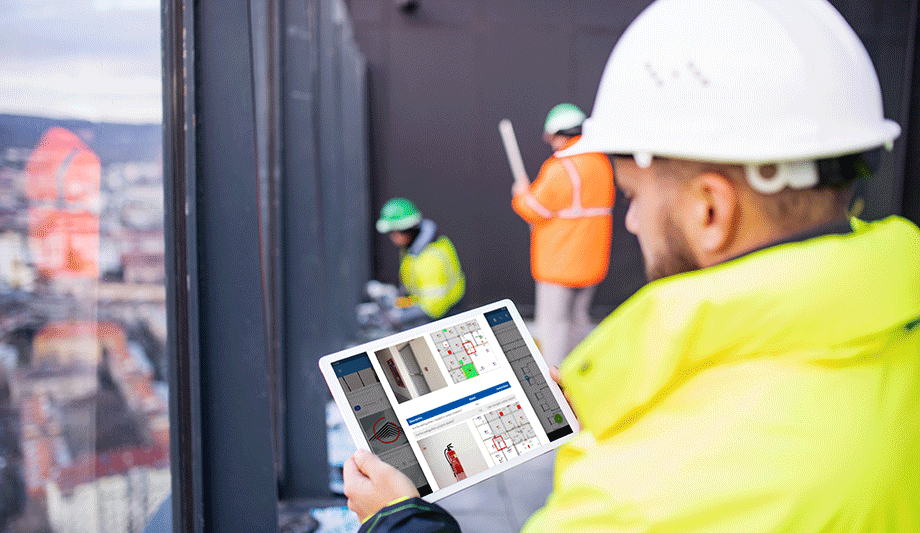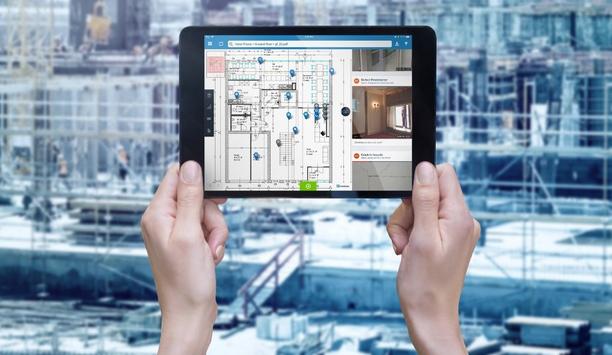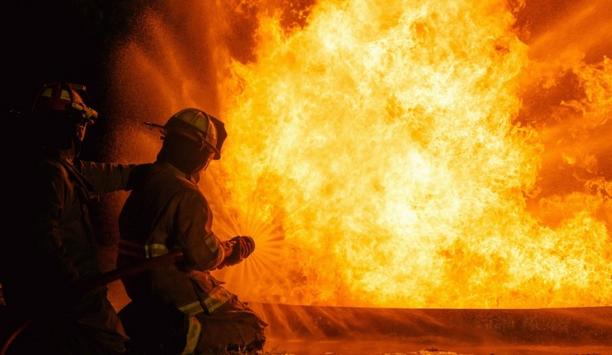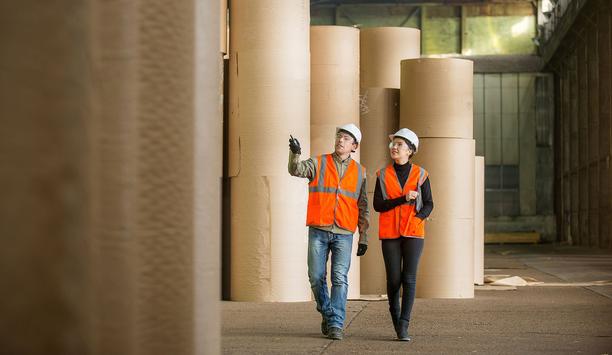PlanRadar - Experts & Thought Leaders
Resources from PlanRadar
A Digital Platform to Improve Fire Safety Compliance and Inspections
DownloadLatest PlanRadar news & announcements
It’s no secret that COVID-19 brought unprecedented challenges to the facilities management industry, changing the way companies work and communicate with one another on an extraordinary scale. But whilst some are more adaptable than others, and continue to work effectively, for the vast majority of businesses, the pandemic has left significant gaps in efficiency and productivity. Ibrahim Imam, Co-Founder, and Co-CEO of PlanRadar explains how digital technology is nudging the needle for the future of facilities management. Impact of COVID-19 The events of 2020 need little introduction, but it’s fair to say that the impact of COVID-19 has had an immeasurable impact on the way industries work and operate. For facilities management, the past year has been challenging, with the pandemic highlighting its dependence on more traditional ways of working. Yet in times of crisis, innovation often emerges, and greater digital adoption now helping to transform the industry. The Learning Curve One of the most revealing aspects of 2020 for the facilities management sector was that digital infrastructure One of the most revealing aspects of 2020 for the facilities management sector was that digital infrastructure and processes are yet to be fully realized. With a heavy reliance on a ‘paper and clipboard’ approach, it highlighted the need for 24/7 digital access to important documentation. Strict lockdown measures meant information such as product service history, building information, and health and safety protocols remained out of reach. Without the right technology in place, the interaction between teams was also inhibited, reducing work rate efficiency. Connecting The Dots But 2020 also presented another lesson: the need for a more informative approach between those involved in the construction journey and those they hand over to. It’s not uncommon for facilities managers to have limited knowledge of a building’s specification, more often than not, they are unable to access a building’s blueprint or make sense of differences they see between plans and the building they’re responsible for. Maintenance Knowledge sharing is key to best practice and an accurate timeline, record of a building should be available to all This situation puts building users at significant risk. After all, how are occupants to know if certain products remain safe by changing guidelines and legislation? This joined-up approach is an idea that Dame Judith Hackett presented at Construction Leaders’ Summit in October 2020. Labeled ‘The Golden Thread of Information’, Hackett hammered home the message that knowledge sharing was key to best practice and that an accurate timeline and record of a building should be available to all, from the materials used, through to design and occupation as well as its ongoing maintenance. Digital Solution With the pressing need for a solution, the market has responded. Technology exists that allows mobile apps to replace paper records, allowing facilities professionals to review project information, or work order status, instantly from their smartphone or tablet. For facilities managers that are overseeing multiple business locations, this technology also provides them with a birds-eye view of projects without the need for unnecessary or time-consuming journeys to the site. digital recordkeeping Digital recordkeeping can enable facilities managers to forecast historic trends and patterns, giving them access to predictive analytics What’s more, digital recordkeeping can enable facilities managers to forecast historic trends and patterns, giving them access to predictive analytics, and helping them effectively manage maintenance schedules and budgets. Whilst having the right tech in place will streamline workflow efficiency should another lockdown situation occur, it’s also best business practice. Fundamentally, it removes reliance on face-to-face meetings and allows team members to receive instant in-app updates through the use of photo documentation or replica worksheets. implementing digital tools With a greater policy focus (and pressure) on the wider construction industry to go further and deeper in implementing these digital tools, it’s only a matter of time before laws and legislation reflect this approach. Yes, there are some growing pains inevitable from rapid adoption, but this short-term squeeze will be worth it when businesses soon start seeing the ROI. So, facilities managers should seize this opportunity to improve their methods of working, not just for end-user safety but for their peace of mind and their employer’s bottom line.
Digital technology is transforming the way the house-building industry is doing business, from making day-to-day on-site processes more efficient, to helping manage asset information, in order to ensure compliance. The question now is ‘what next?’ To answer this question, some of the sector’s renowned content providers offer their key insights about the main motivators behind the latest innovations. AI, IoT-backed devices PJ Farr, Managing Director of leading construction connectivity provider, UK Connect, said “As AI, IoT-backed devices and big data applications start to become common-place on site, so too will the latest standards in connectivity. One of the main reasons the industry has been relatively slow in the race towards digital adoption is down to the network capabilities, during the construction journey.” PJ Farr adds, “However, the advent of 5G and Wi-Fi 6, two landmark wireless broadband standards, are changing the rules of the game. With these two innovations in place, think of the benefits: no lag time, live collaboration without buffering, and automated systems and machinery which can work almost intuitively, operating efficiently and saving their own energy when not in use.” Collation, management and presentation of accurate data End clients as asset owners, are waking up to the monetary value of digital twins and robust data logs" Tom Boland, the Head of Digitalization - Building Lifecycle Information Management Software at Zutec, said “End clients as asset owners, are waking up to the monetary value of digital twins and robust data logs, which detail how buildings have been constructed, maintained and adapted. This digital record is set to become essential, as the regulatory landscape changes.” He adds, “The collation, management and presentation of accurate data looks set to become a preoccupation, even an obsession, for contractors and developers nationwide, as they seek to comply with new regulations and de-risk property.” Transparency, responsibility and quality Tom Bolland further said, “This will apply whether they ultimately own the asset or not. Positively, it will drive up transparency, responsibility and quality. That’s no bad thing.” Ian King, the Chief Operating Officer - Innovative Fire Protection Technology at Zeroignition, said “The construction industry needs to learn from other industries, such as automotive and aviation, which focus on a checklist approach to reduce harm to passengers. When people rely on memory, mistakes happen, and the simple action of checking off points can prevent fire planning elements being missed.” Digital footprints to ensure right building criteria adherence Ian King adds, “The digital ‘revolution’ that the construction industry is experiencing can create ‘digital footprints’ that prove the right building criteria has been adhered to. This will become essential if we’re to successfully implement watertight fire safety checks before a building is handed over to the occupant or end user.” Siôn Bellis, the Chief Residential Officer - Structured Data and O&M Specialist at Createmaster, said “Post-Grenfell, fire and emergency systems and protocols have been thrown into the spotlight. While many will see the physical solutions from fire doors and smoke alarms, to sprinklers and extinguishers, the operation and maintenance information which underlies them is less appreciated but equally important.” Data storage in the Cloud Technology’s changing that, and storing this vital data in the Cloud will start to become the norm" He adds, “As the new planning gateways start to take effect, contractors, developers and asset owners will be keen to ensure the fire and emergency information they have, matches what’s been specified, and complies with the law. This information was previously stored in a nebulously inconsistent physical or rudimentarily digital file, making it easy for vital information to be mislaid.” Siôn Bellis further said, “Technology’s changing that, and storing this vital data in the Cloud will start to become the norm, particularly as asset owners begin to understand the vital importance of having this information at every stage of the building lifecycle.” Building Safety Bill Matt Ryan, the UK Country Manager - Defect Management Expert at PlanRadar, said “The role of construction technology is becoming synonymous with compliance. As we’ve seen through recent legislation changes, such as the Building Safety Bill, residents’ safety is a top priority and businesses can no longer bury their heads in the sand when it comes to improving standards.” Matt Ryan adds, “Instead, house-builders must act quickly to introduce ways of preventing potential mistakes, to improve build quality and reduce end-user risk. This is where technology comes in, helping businesses to take action now, and future-proof for later. Investing in the latest digital quality assurance and project management tools will avoid any action being taken by the regulators and provide answers to claims from homeowners, while raising general building standards across the board and offering residents maximum protection.” ‘Safety’, ‘Quality’ and ‘Compliance’ ‘Safety’, ‘Quality’ and ‘Compliance’ appear to all be words synonymous with our contributors’ approaches and attitude towards the role technology will have in improving not only the house-building sector, but the wider built environment. What’s clear is ConTech is enabling better practice across the industry, driving up quality across the board and, most importantly, helping to de-risk the residential property sector. Looking forward to the year ahead, which will be heavily-focused on the new regulatory framework, we can no doubt expect digital adoption to be further embraced across the house-building community.
The past 18 months have been transformational in many ways. Events such as the COVID-19 pandemic, increasing safety legislation, and a squeeze on profit margins have been a catalyst for change, thereby leading to significant investments in new software. It’s also put the spotlight on productivity and efficiency. According to ONS figures, productivity levels in construction have remained consistently below the UK average, until more recently. New digital strategy However, civil engineering is well placed to make adjustments, having consistently been the most productive sub-industry within the sector. But, if a new digital strategy is to truly take hold and be embraced by its workforce, then it’s essential to be aware of common barriers to success – and how to overcome them. Matt Ryan, the UK Country Manager at PlanRadar, explains. Supporting not replacing staff For some, the news of incoming innovation can raise questions around job security For some, the news of incoming innovation can raise questions around job security – will they eventually be replaced, will they need to get tech-savvy or even retrain? Yet, it’s simple to see where so many go wrong and it’s about tackling this human, culture-driven factor head-on. Here, communication is critical and it’s about talking to the workforce and pinpointing where uncertainty or apprehension might lie, before a full roll-out begins. Take the time to show how each business area can improve and develop specific examples of how it will help and not hinder their day-to-day functions. Importantly, staff will want to know how it can benefit them directly. They’ll want to know that their voices are heard. Train with the experts It’s likely that in some cases, workers who have made their way through the ranks are more familiar with an analog approach and the idea of working with tech tools daily is a worrying prospect. But, as it is known, it needn’t be painful – most modern con-tech tools have been explicitly designed with that functionality in mind, using existing hardware, such as phones or tablets for ease of use. Asking the supplier or provider to train the workforce directly will help deliver the best results and increase the likelihood of full adoption. It’s vital to retain patience and compassion, during this process, as inevitably, speeds at which people learn vary, no matter how user-friendly the tech may be. Ambassadors to spearhead change ‘Ambassadors’ or dedicated teams responsible for pushing the use of new tech within organizations can also drive success. Staffs then have ‘go-to’ contacts for queries, thus maintaining momentum. This was seen in practice with Geoffrey Robinson Ltd, which has 220 staff. It successfully used a specialist team to coach staff and ensured they had access to the latest plans, forms, documents and other necessary information. A phased approach Having a plan to roll out a new digital strategy can prevent headaches further down the line Having a plan to roll out a new digital strategy can prevent headaches further down the line. If springing new technology onto a busy workforce without proper prep, it won’t go well, so use time-based project management. There is proof of this in practice. National Highways in its ‘Digital Roads 2025’ strategy is doing just that. Splitting into three core themes, ‘Design and Construction’, ‘Digital Operations’ and ‘Digital Customers’, the strategy plans to revolutionize its working practices through digital means, in order to reduce the need for time consuming and costly on-site inspections, prevent unnecessary delays and reduce emissions generated by roadworks. The ongoing process Finally, this is not a single, one-off moment; implementing new tech is ongoing. Once the technology is in play, take time to review it and ask for honest feedback from users, in order to find out where the sticking points are. Work with the supplier to iron out any issues – because after all, everyone wants to achieve maximum value.
Insights & Opinions from thought leaders at PlanRadar
Nearly a decade has passed since the devastating Grenfell Fire, and still the UK construction industry finds itself grappling with the imperative of ensuring fire safety standards in residential buildings. A key issue is the gathering, administration and distribution of up-to-the-minute, whole-life building data; vital information, for safeguarding residents during emergencies. Despite the urgent need, information voids and data deserts continue to plague the built environment. Notably in older properties. These lapses enable the presence of ongoing hazards, endangering occupants, also potentially jeopardizing the careers of anyone involved in the design, construction, and management of the affected buildings. Integrity of building information There has been substantial progress achieved to enhance the integrity of building information In recent years, there has been substantial progress achieved to enhance the integrity of building information. However, the pursuit of Dame Judith Hackitt’s ‘Golden Thread’ remains a marathon, not a sprint. The phrase ‘room for improvement’ seems apt, as a safety-first ethos has yet to filter through to every level of the industry. In fact, the industry needs to get a move on, as the government has made ambitious housebuilding plans the cornerstone for economic growth. Any data deficiencies in new or refurbished projects will be seen as critical setbacks as occupancy must be delayed until all building information is collected. This underlines the urgent need for agreeing standardized, industry-wide data protocols. Enter the indispensable Regulation 38 Introduced under the Building Safety Act 2022, Regulation 38 serves as a critical mechanism to bridge fire safety information gaps at every project phase – from initial planning and design to construction, handover, operation, and maintenance. It meticulously addresses essential elements such as fire suppression systems, evacuation routes, and construction materials. Crucially, it guarantees vital fire safety data is accessible to those responsible for building safety throughout its lifespan. This is more than mere form filling, it’s a vital backstop ensuring critical fire safety information is available for final inspection, before a building’s suitability for occupancy is determined. However, the take-up of Regulation 38 processes is not as widespread as it should be. Despite its significance, many contractors and subcontractors struggle to grasp its importance or incorporate it into their daily operations. Implementation challenges The difficulty in getting developers, contractors and builders to conform to fire safety documentation ideals The difficulty in getting developers, contractors, and builders to conform to fire safety documentation standards essentially boils down to inadequate, inconsistent, and outdated data management processes. Despite the abundance of best practice guidelines, project teams continue to wrestle with disorganized and incomplete records; even these are often scattered and isolated. The continued reliance on paper-based and offline documents further complicates things. You’ve also got to factor in the sheer volume of data that today’s project teams must handle. The data generated from Building Information Modeling (BIM) alone is staggering, leading to potential overload, increased human error, and diminished accuracy. Digital systems and data management processes Outdated technological infrastructures add another layer of complexity, particularly for SMEs lacking the resources to update their digital systems and data management processes. Incompatibility between legacy and contemporary software breeds inefficiencies and increases the likelihood of errors. These interlinked issues inevitably lead to compliance failures, resulting in costly delays and potential financial, legal, and reputational repercussions. However, the good news is that a readily accessible, mainstream solution already exists to ensure seamless compliance with Regulation 38 and beyond. Embracing digital data solutions Fire safety compliance can now be streamlined, with digital solutions applied across the entire building lifecycle In the last decade, digital information management tools have undergone a remarkable evolution. Modern platforms have revolutionized the identification, collection, storage, recovery, and sharing of critical fire safety information. Better still, these digital tools standardize processes through set templates and workflows, enabling instant communication and seamless integration with existing systems. These tools are potential game-changers. Fire safety compliance can now be streamlined, with digital solutions applied across the entire building lifecycle. For instance, contractors can now capture and organize data in real-time during construction, using mobile devices to photograph work, document it, and store it in a centralized cloud-based bank. This once-cumbersome process is now much more user-friendly, and accessible to individuals with varying levels of IT proficiency. As AI and Augmented Reality technologies progress, their likely future integration into these platforms holds the potential to further empower project teams in achieving Regulation 38 compliance with ease. Driving change Turnkey, software-as-a-service (SaaS) solutions, such as PlanRadar, are at the forefront of delivering affordable, regulatory-compliant solutions. What this means, is that now even smaller businesses can access comprehensive solutions without undue financial strain. The impact of all this should stimulate a genuine cultural shift in the construction sector. The objective is to transform industry perceptions of Regulation 38, from a burdensome compliance task to a straightforward safeguard for protecting building occupants. This requires real commitment to sticking to the regulations. The tools are there to help industry comply with the process. It’s now time to pick them up and put them to work.
In the six years since the tragic Grenfell Tower disaster, the construction industry's approach to fire safety has faced rigorous examination, and sparked a series of legislative changes, most notably the enactment of the Building Safety Act and Fire Safety Act of 2022. These measures have substantially raised standards, contributing to a safer overall industry. As we approach the year’s end, assessing the industry's progress and its trajectory becomes a crucial endeavor, especially considering the potential impact on the safety of our built environment and people’s lives. To gain insights into this, we have spoken with industry professionals, each providing a unique perspective on what they anticipate 2024 will bring. Risk management practices Ian King, COO, Zeroignition: “2023 has seen major developments in terms of addressing the gaps within fire safety. Added responsibilities for RPs (Responsible Person) has been a wake-up call and stricter requirements around the recording and sharing of fire safety information will go a long way to achieving the much-discussed, Golden Thread. The introduction of planning gateway one is another positive stride towards elevating building safety standards and refining risk management practices. But the recent much publicised fire on a construction site in Reading shows there’s a way to go.” 2023 has seen major developments in terms of addressing the gaps within fire safety" "Looking ahead to 2024, there's promising emphasis on the use of wood in UK construction projects. As staunch advocates of timber construction, we hope this trend continues and recognize that when followed diligently, fire protection protocols around such structures can match the safety levels of other materials.” Quality control measures “Timber also facilitates faster, lower-carbon builds and boosts off-site construction. Modular construction, with its stringent quality control measures, stands out as a game-changer for future projects.” “It is my hope that regulatory reforms persist next year, particularly around increased investment into third-party testing facilities and product certifications. A focused effort on this area will help create a safer building product market and encourage a ‘safety first’ mindset. Let’s set our sights on combining safety with sustainability, for a better future for all.” Fire safety awareness Specifiers want acoustic products that go above and beyond Approved Document B fire requirements" Ben Hancock, Managing Director, Oscar Acoustics: “Updates to fire safety regulations in 2023 have brought a renewed focus on the safety and compliance of working environments, particularly within office spaces. As a result, companies want proof that products can perform and requests for third-party certifications are increasingly common.” “We've also seen a sharp rise in fire safety awareness and knowledge. Specifiers want acoustic products that go above and beyond Approved Document B fire requirements, as the ideal is to produce little to no smoke and no droplets, supporting the safe escape of occupants. As fire safety strategies continue to evolve and safeguarding measures become paramount, we expect more relevant testing to be requested, as product fire performance can differ wildly between light and dark colours or thin and thicker applications.” Fire safety information Rob Norton, UK Director, PlanRadar: “2023 was a year of much-needed legislation change, increasing the accountability of RPs and laying the foundations for watertight fire safety protocols. It was the push the sector needed.” The golden thread will also continue to dominate workflows, and many businesses will increase investment" “Moving into 2024, I predict an increasing reliance on digital tools and platforms as the industry looks to improve the speed and accuracy of fire safety processes. In particular, the stringent management of fire safety information and record-keeping. Efficiency will also be key, as fire-safety procedures become embedded companies will want to find ways of recording and sharing information more easily, be it between internal teams or those outside of their organisation.” “The golden thread will also continue to dominate workflows, and many businesses will increase investment in digital technologies and systems to ensure industry compliance. Going further, I hope to see further collaboration in construction’s approach to fire-safety, bringing greater consistency and quality to fire-safety checks and strategies.” Fire test evidence Peter Long, Divisional Fire & Certification Director, Optima Systems: “The past year has highlighted some continuing issues around fire safety; mainly that the design process and strategies towards it are often not given enough time to allow proper coordination. When faced with quick turnarounds, it’s difficult to ensure specified products have appropriate fire test evidence and their performance credentials replicate real-life application. Working in this way leaves space for mistakes and misspecification.” The past year has highlighted some continuing issues around fire safety" “Going into the new year, I’d like to see increased collaboration between all parties involved in the supply chain. It’s time for the industry to tackle fire safety projects in a holistic way, rather than the current siloed approach where construction products are specified and procured individually and without proper consideration for their direct interfaces.” Assured fire safety “As a manufacturer of fire-rated steel-framed glass partitions, Optima is spearheading this initiative, going above and beyond what’s required when it comes to publishing fire-test evidence. It’s not possible to achieve assured fire safety if manufacturers, designers, specifiers and architects do not share information or recognise its importance.” “We must also ensure that each party understands the latest regulations and guidance, making sure fire safety is considered every step of the way. In the coming years we must explore ways to standardise levels of competency within the industry, starting with better training on products and systems as well as tools that improve communication.”
As recent news headlines have shown, the construction industry is still in need of major improvements to fire safety protocols and building standards. With new legislation on the horizon, it’s now imperative companies do all they can to guarantee end-user safety. So, how is digital construction helping to improve fire safety? Matt Ryan, UK Country Manager at PlanRadar, explains how some of the latest digital tools are helping to join the dots in safety inspection and compliance. High rise buildings Recent studies have uncovered a worryingly high number of fire safety issues within many of the existing structures – particularly for those living in high rise buildings. Only last month, the London Fire Brigade revealed that there are still more than 1,000 buildings in London that require residents to evacuate buildings in the event of a fire, rather than follow the standard advice to remain in their homes and await instructions from fire crews, due to issues such as flammable cladding. The construction industry is responding and significant progress around fire safety is being made A Grenfell campaign group has also urged Housing Secretary Michael Gove to take further action around fire safety, highlighting that many residents still remain unsafe. With some huge issues to overcome, the construction industry is responding and significant progress around fire safety is being made. At the head of these improvements are digital tools and technology, which mark a new phase in safety and compliance. Better working practice Following Dame Judith Hackitt’s review of building regulations and fire safety back in May 2018, the government has proposed significant changes that will encourage better working practice – most notably the introduction of a new building safety regulator and new construction product regulator. Once implemented, the regulations will be a landmark step in a new, more rigorous framework for higher-risk buildings. For those that fail to meet the legal requirements, it’s promised that repercussions will be severe, with serious financial and legal ramifications to follow. It means that contractors, designers and building owners will have to legally demonstrate a building is safe, requiring regulator sign-off before projects can move forward. Whilst this may seem a daunting prospect, emerging tech and digital tools are streamlining this process, reducing the likelihood of mistakes from occurring. Tamperproof audit trail This approach not only puts end users at risk, but adds ambiguity in the event of an accident It’s no secret that the profitability of building projects relies heavily on specific timelines – after all time is money. Yet a rush to the finish line can coincide with a drop in standards, with areas such as fire safety falling by the way side. This approach not only puts end users at risk, but adds ambiguity in the event of an accident, muddying the waters around which contractor or subcontractor is responsible, exacerbated by an often inconsistent and unclear paper trail. However, with the introduction of technology such as platforms and apps, on-site workers are now being given the means to provide evidence that essential work has been carried out to the proper standards. With intuitive and easy-to-use design, often through a tablet or phone, individuals can quickly capture evidence of completed work, creating a digital, tamperproof audit trail, complete with dates and timestamps to match. Work rate efficiency Should this work ever be called into question, a digital timeline can be provided, be it from a large contractor or an individual tradesperson. Another huge benefit of construction tech is its ability to improve work rate efficiency. Digital replicas of worksheets and key forms, including EWS1 forms, can be uploaded, allowing information to be entered quickly and with greater accuracy by qualified experts while on-site. This approach ensures that audit trails are reliable and that a timeline of actions can be easily produced The laborious task of entering written information into word processing or spreadsheet programs, which can often result in human error when transcribing hand written notes, is removed, and reports can easily be generate without duplicating work. This approach ensures that audit trails are reliable and that a timeline of actions can be easily produced. Cloud-Based technology QSHE Managers can even update inspection sheets from the office, rolling out new fields for site teams to complete seamlessly across multiple sites at once. When new guidance is published, it’s possible to start the journey towards compliance the very next day. With the continuation of remote working, cloud-based technology is also giving site managers the freedom to access important documentation at the push of a button. Should project managers need up-to-the-minute safety inspection information, with the right permissions in place, it can easily be accessed, allowing for greater visibility when working over multiple sites. The added benefit of which, is improved information-sharing, in-line with Dame Judith Hackitt’s vision of the ‘Golden Thread of Information’. Modern working practices Capturing and recording this type of information will be crucial as fire safety standards advance Business performance and the role of ‘big data’ is now becoming integral to modern working practices. Companies want deeper insights and in-app tools are allowing organizations to harness ‘unstructured data’ – that is data that’s harder to quantify, such as emails, text messages and images. Capturing and recording this type of information will be crucial as fire safety standards advance. With the ability to now send in-app images and video, data capture must extend to all forms, not just traditional numbers on a spreadsheet. For in-team communication this also has huge benefits, providing visual proof and instant messaging, allowing everyone to remain informed, rather than running the risk of an email, which can be lost or deleted. Raising overall standards With the Fire Safety Act due to come into effect in 2022 or 2023, companies that can get a handle on fire safety and compliance are sure to futureproof their business. The era of digital is now taking hold in construction, raising overall standards and giving the sector the tools it so desperately needs to ensure that work is carried out to the highest of standards. For individuals, digital technology provides something much more; peace of mind. With the risk of being personally accountable in the result of compliance failures, there’s no better feeling than knowing work has been carried out to the best of abilities, and that end-users can once again feel safe in their homes and workplaces.
The New Future For Fire Agencies
DownloadThe Eight Key Trends in Fire Detection in 2023
DownloadA Digital Platform to Improve Fire Safety Compliance and Inspections
DownloadOvercoming the Challenges of Fire Safety in the Paper Industry
DownloadCarbon Monoxide: Creeping Killer Caught In The Act
Download














